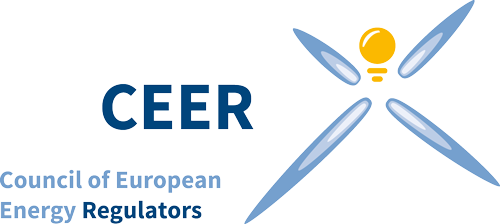February 2010
| | |
| European Energy Regulators’ News | |
| Issue: February 2010 | |
| If this e-mail is not displayed correctly, please click here! | |
|
Events | Editorial |
| The building blocks of a secure and interconnected EU electricity grid | |
| The need for TSOs to co-ordinate and align their grid development at regional and European level |
| CEER/ERGEG Publications |
| Publications: • Open letter on the establishment of ad hoc expert group on gas balancing, deadline 5 March 2010 • Open letter on the establishment of ad hoc expert group on electricity system operation, deadline 2 March 2010 Events (see Events section of website for the new calendar of next workshops) : • Framework guideline on gas capacity allocation and comitology guidelines for congestion management, Brussels, 2 February 2010 • Electricity 10-year network development plan, Brussels, 11 February 2010 • Integration of wind generation, Brussels, 11 February 2010 • Customer Complaint handling, Brussels, 25 February 2010 |
| Calendar of current and future public consultations |
|
The standard period for ERGEG public consultation is 8 weeks. See the public consultations section of the website.
| Events |
| See all dates of Regional Initiatives meetings (RCC, IG, SG) on the ERGEG online Calendar. |
| Regional Initiatives Update |
|
|
| Region in the Spotlight - North West gas region's advice on how to enhance a regional investment climate |
| In 2009, using a virtual case study, the GRI North-West gained valuable insight into the northwestern European investment climate for cross-border infrastructure. The virtual case study involved analysing the (hypothetical) economic feasibility of the construction of a specific pipeline. Based on the case study’s findings, which have been recorded in the journal of findings, the GRI formulated its policy advice. The GRI NW has subsequently drawn up recommendations on how to address the (7) burdens encountered in (actual) current regional investment processes. The most important areas for improvement are coordination, compensation methods, and transparency regarding investment processes. The RCC, comprising the nine regulators of this region, approved this advice on 2 February 2010. Other stakeholders endorsed these recommendations as well. |
| About the European Energy Regulators' News |
| Reported content is given for information purposes only and does not legally bind any of the involved parties. Where third-party sources are mentioned, CEER/ERGEG is not responsible for the accuracy of the information. Your feedback on European Energy Regulators’ News is welcome, so as to improve future issues. Contact: una.shortall@ceer.eu |
